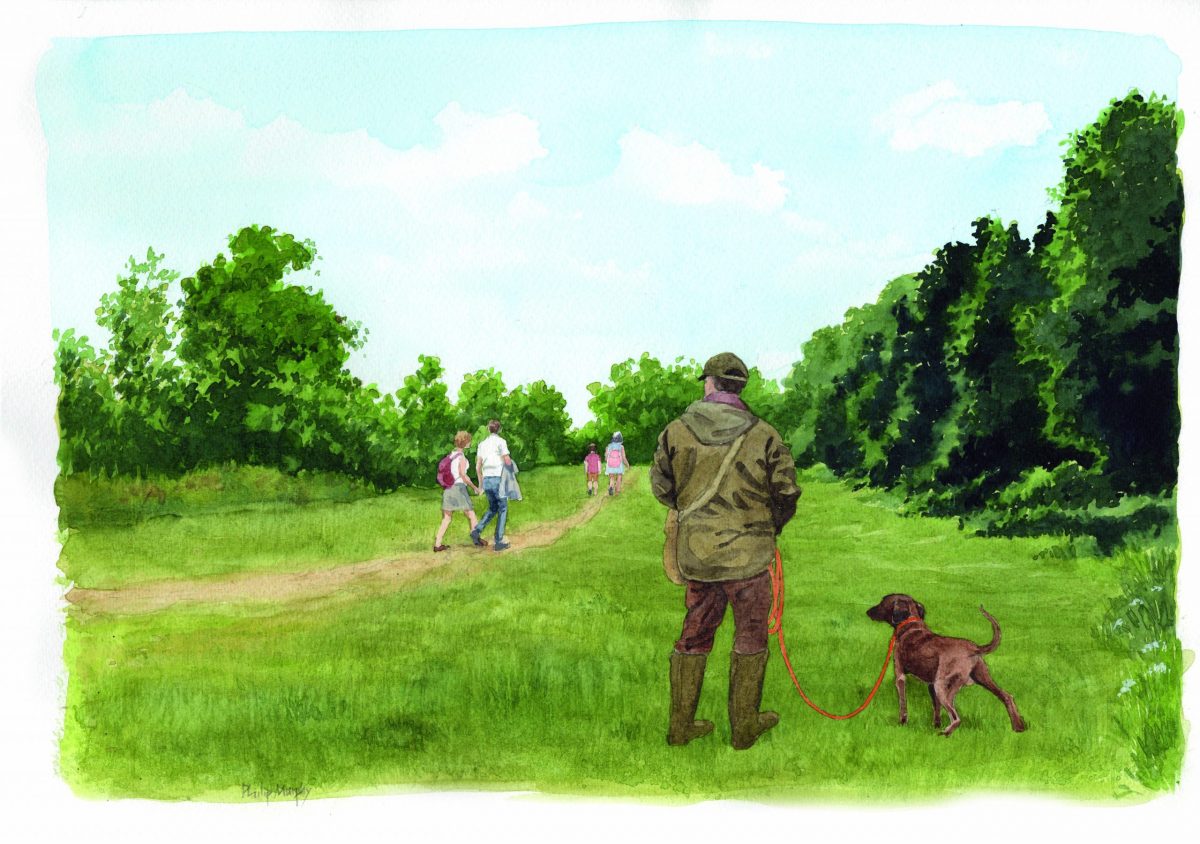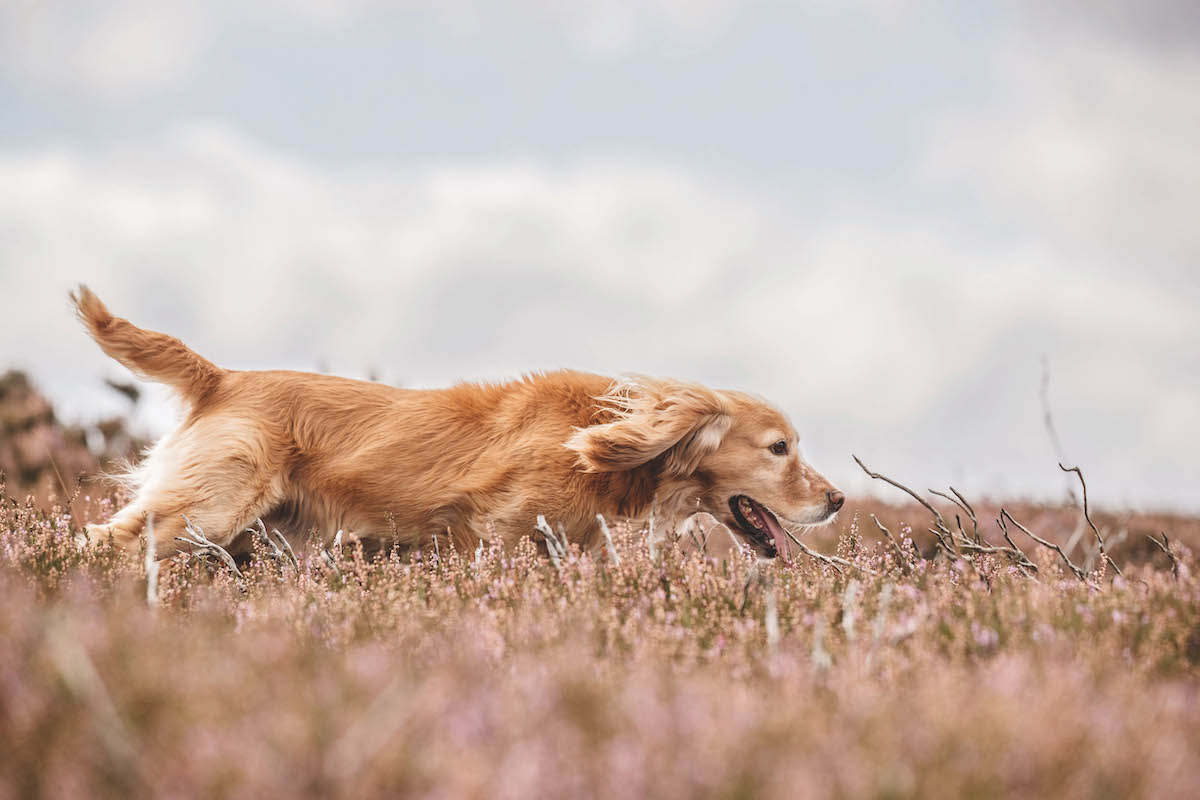Tracking dogs – what potential owners need to be aware of
Tracking dogs are in high demand, but there are a host of pitfalls awaiting potential owners

Traditional hunting grounds are being opened up to the public, presenting new problems for tracking dogs and handlers
When trackers sit down together in a group, the conversation inevitably turns to tracking dogs and the state of affairs in which we find ourselves. I was recently part of one such discussion and the consensus confirmed what I had seen happening in my own part of Belgium: fewer dogs were being registered with the associations than ever before.
The changes to hunting legislation may have something to do with this. For many years now, it has been against the law to release any animals into the wild for hunting. The result is that there are no pheasants to shoot, the rabbit population has virtually disappeared and partridges are coming under pressure. Hunting as
a whole is being squeezed through a scarcity of prey.
There are also issues thanks to traditional hunting grounds being opened up to the public. I have an example in my area, where a terrain that used to belong to a single landowner has been taken into public ownership.
People are now free to walk and ride there every day. What the long-term effect of this policy will be is anyone’s guess. I do know that I have been called on more in the past year to search for deer that have been involved in accidents than for those shot during a hunt. Worryingly, the population of roe deer has more than halved in a few years.
There are still some places that offer enough game to support hunting in a big way, but it remains important to safeguard the wildlife in the area and juggle the needs of all interested parties — hunters, farmers and local authorities — to ensure good relations are maintained.
Interlopers
Added to this is the growing incursion of wild boar that are slowly roaming from east to west, spreading out from the Ardennes and into the Walloon fields and forests. The government has mandated that these interlopers must be combatted aggressively by hunters, according to strict rules, if other preventative action fails.
Taken together, it all adds up to a significant change in the dog world. With less small game and more boar, many hunters now want to buy a suitable ‘tracking dog’, but here’s where the problem starts. It’s easy to label any mutt as a tracking dog, but it’s not possible to do this work with any old animal.
The internet is full of adverts for new litters — you know the breeds — with absurd asking prices. A typical example is a Hanover-Bavarian crossbreed for €1,250 (about £1,050) — the same price as a pure-blood specimen. There are no papers, of course. These dogs may be advertised as pedigree hounds, but the truth is that buyers are being ripped off.
An unintended consequence of this mass of breeding is that many of the dogs don’t even find homes with hunters, but instead end up as family pets. It’s a travesty of a role for such animals.
Those that do escape that fate are often found attending drift hunts with their hoodwinked buyers. We see the same story in lots of countries now: owners lining up in the morning with neatly leashed ‘tracking dogs’ that have mysteriously vanished after the hunt when a real search is needed.
So, the task falls to those standing on the sidelines who have the knowledge and experience to try to track the injured beasts, sometimes after the evidence has been lost during amateur search attempts.
In the Flemish part of Belgium, there’s been a real explosion in the numbers of so-called tracking-dog associations that are ‘training’ the animals we see at these events.
The dogs they accept can be any breed and most operate without a recognised licence and have never taken any type of test. Some are in it for the money and give nothing meaningful back in return.
One woman who enrolled her animal for tracking training was sold a package of 10 lessons with one track to be followed on each lesson. It turned out that this meant 10 sessions following the same trail that had a piece of dry deerskin at the end of it. She paid €500 (about £420) for the course, at the end of which she was given a meaningless diploma. It’s a common enough tale.
Part of the problem, in my opinion, is the lack of huntable small game, which is encouraging people to hunt larger animals instead and so take on a dog that can track deer or wild boar.
Common goals
As the evening wore on, our conversation turned to the importance of joining a recognised association. As we compared notes, we realised that all the officially affiliated groups used a broadly similar registration process.
In our case, we send an email with a form asking for all the required information, along with a request for a copy of the dog’s pedigree papers. Only a few take the trouble to reply.
The rest presumably can’t see the value of spending time on educating themselves and their dogs so that they are competent to fulfil their intended role in the field and be recognised by the officiating bodies.
All those around the table shared common dreams and they were that all breeding should be controlled by the FCI, the largest international federation of kennel clubs, and that ‘tracking dogs’ and their owners must receive bona fide training with a recognised association.
Right now, however, we’re left to try to clear up the mess caused by unsuitable, untrained dogs being asked to fulfil a role that they were never born to play, which hampers the work of expert hounds and handlers. Even worse, unless breeding controls are enacted soon, we could see the characteristic traits of our pedigree dogs — which have been refined for centuries — lost due to greed and ignorance








